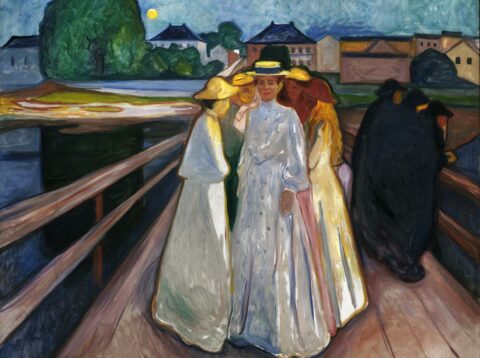Hjalmar Söderberg and the Visual Arts
The author Hjalmar Söderberg (1869–1941) had a close relationship with the visual arts. The exhibition features works that highlight both the author’s view of himself, and the view other artists had of Söderberg. Books with ornaments made by the author and other objects that relate to the Söderberg are also displayed in the “Söderberg Room”, where the artist used to stay in difficult times.
Ernest Thiel’s financial support allowed author to focus on his literary career. Söderberg also assisted Thiel – in reviewing his translations of Friedrich Nietzsche’s œuvre into Swedish. Thiel describes Söderberg as his most faithful friend and the author was always a welcome guest in the palace. They were also both passionate chess players and sometimes the three decade long correspondence consisted only of chess moves by way of short notes.
Söderberg despised all forms of hypocrisy and a clear pattern in his literary works is the support for women’s right to choose for themselves. This applies not the least in the modern relationship drama Gertrud (1906). It might not be a coincidence then, that the two most observant and acute portraits were made by two female artists, Astrid Kjellberg-Juel (1877–1965) and Gerda Wallander (1860–1926). In addition, Hildur Hult-Wåhlin’s (also called Hildur Hult) (1872–1904) sensitive coal drawing and Anna Riwkin’s (1908–1970) silver gelatin photograph of the aging author with the mindful gaze, are among the most noteworthy portraits.
Hjalmar Söderberg was a draughtsman his whole life but the interest in making self-portraits peaked early in his life. In the drawing Moi from 1890 Söderberg has one eye open for far vision while the other is squinting for near sightedness, a way of showing his ability to view humanity both at a distance and close up. In the short story Vox populi, published in Historietter (Anecdotes) from 1898, he writes: “I have noticed that one sees the world more synoptic if one looks at it with half closed eyes. All lines become cleaner and simpler. […]” Reflections on the gaze is also manifested in a photography where the author observes the passerby with a binocular.
In an ink wash from 1895 Söderberg has changed shape and depicts himself as a dandy posing in front of wallpaper with French fleur-de-lis. That same year, Söderberg’s harshly criticised debut novel, Förvillelser (Delusions), were published.
The exhibition Hjalmar Söderberg and the Visual Arts takes place in “Söderbergrummet” (“The Söderberg Room”) where the homelike feeling is heightened by the furniture: the author’s secretaire and chair, and a bust sculpture of the philosopher Voltaire. Works from the Thiel Gallery are shown alongside loans from Nationalmuseum, Moderna Museet, the Gothenburg University Library, Örebro University Library, the Bonnier Portrait Collection, Nedre Manilla and private owners.
Curator: Sophie Allgårdh in collaboration with Söderbergsällskapet (The Söderberg Association)
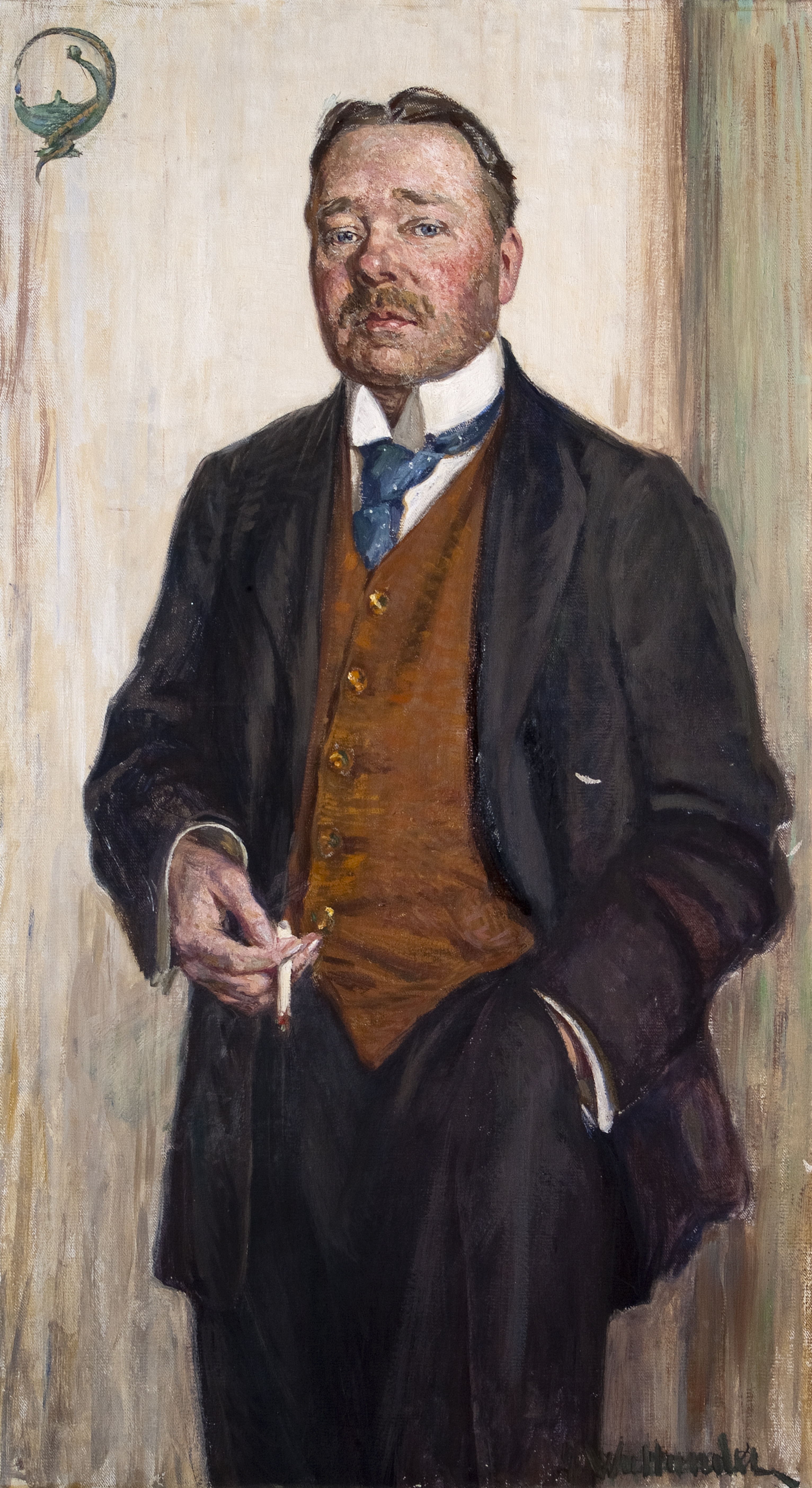
Gerda Wallander, Portrait of Hjalmar Söderberg, 1916, Thielska Galleriet
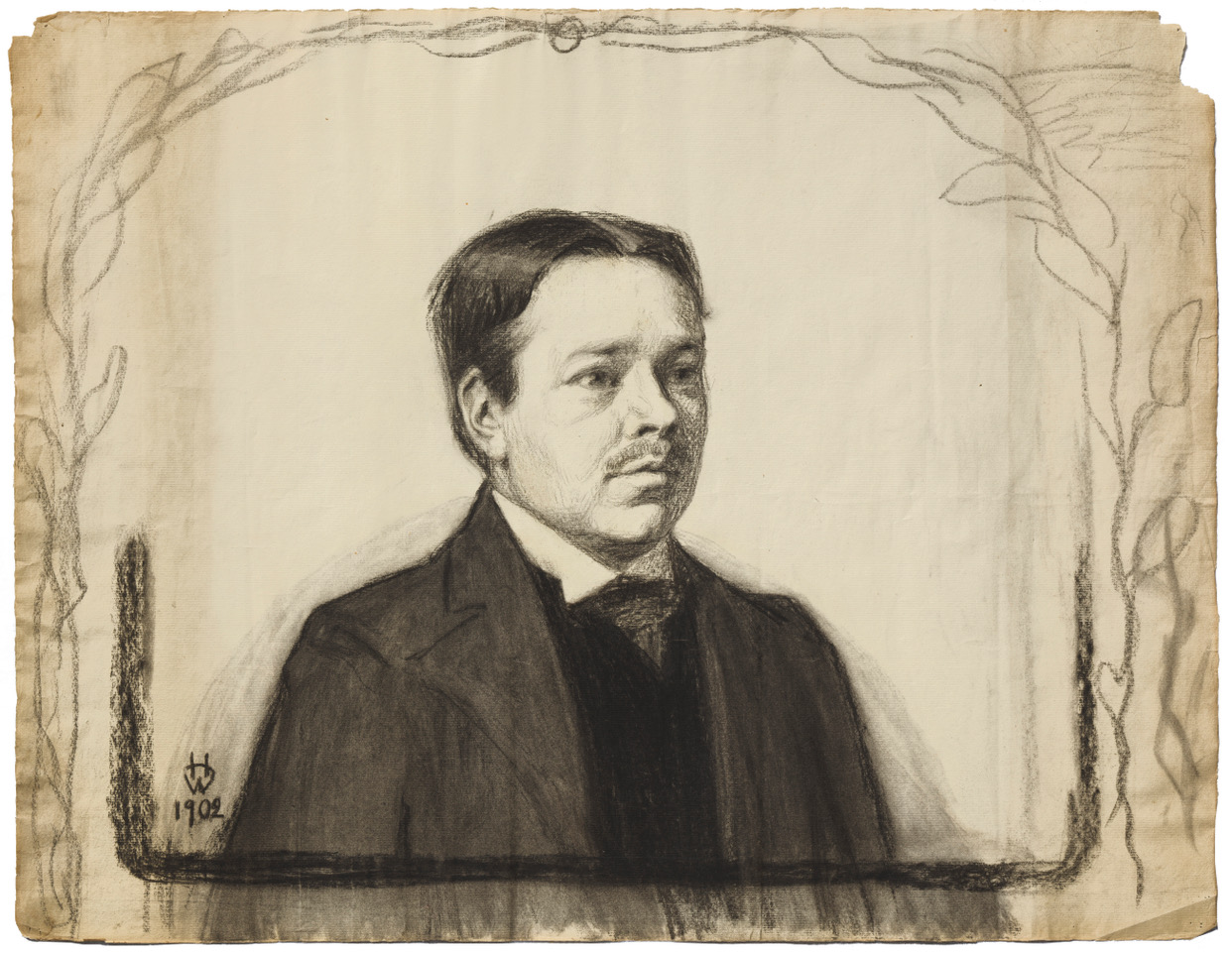
Hildur Hult, Portrait of Hjalmar Söderberg, 1902, charcoal drawing, 48 x 62 cm. Photo: Per Myrehed / The Thiel Gallery
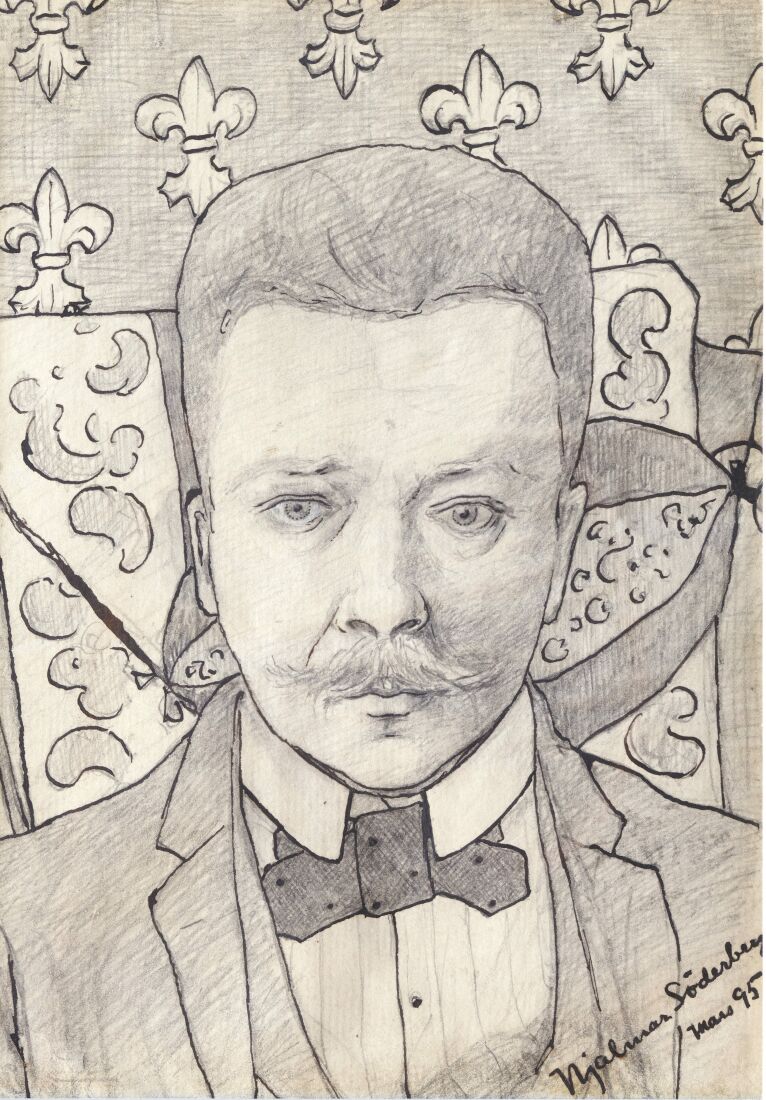
Hjalmar Söderberg, Self portrait, 1895, ink wash. Belonging to Bonniers portrait collection, Nedre Manilla. Photo: Per Myrehed

Astrid Kjellberg-Juel, Portrait of Hjalmar Söderberg, 1912, oil on canvas. Belonging to Bonniers portrait collection. Photo: Per Myrehed
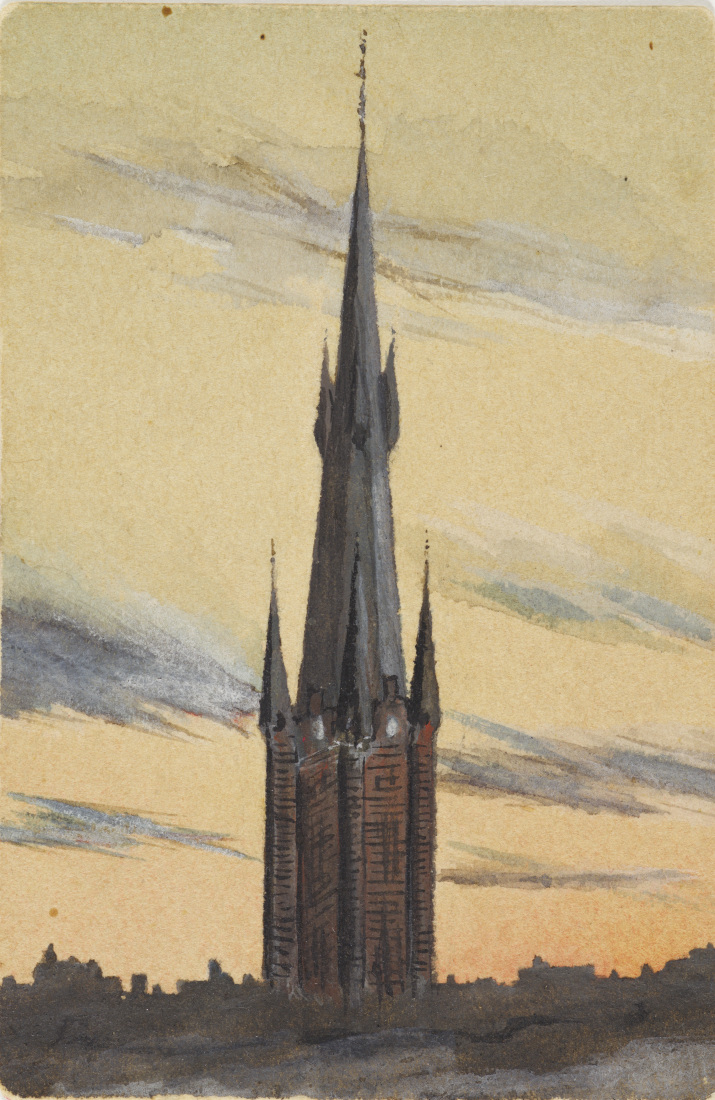
Hjalmar Söderberg, The church tower of Saint Clare, 1884, crayon on paper, Göteborgs universitetsbibliotek. Photo: Per Myrehed

Sigge Bergström, Portrait of Hjalmar Söderberg, 1919. The wood cut initiated Vängåvan to Hjalmar Söderberg's fiftieth anniversary that year. The figures in the right corner are probably inspired by Hjalmar Söderberg's descriptions from the first scene in Gertrud (1906) with her and her husband, Gustaf Kanning, He has "no hair" and she is "tall and graced with rich brown hair".

Hjalmar Söderberg greets Niels Hansens Jacobsen sculpture Troll that hunts for Christian flesh outside Jesuskyrkan in Storköpenhamn 1907. Photo: Birger Mörner
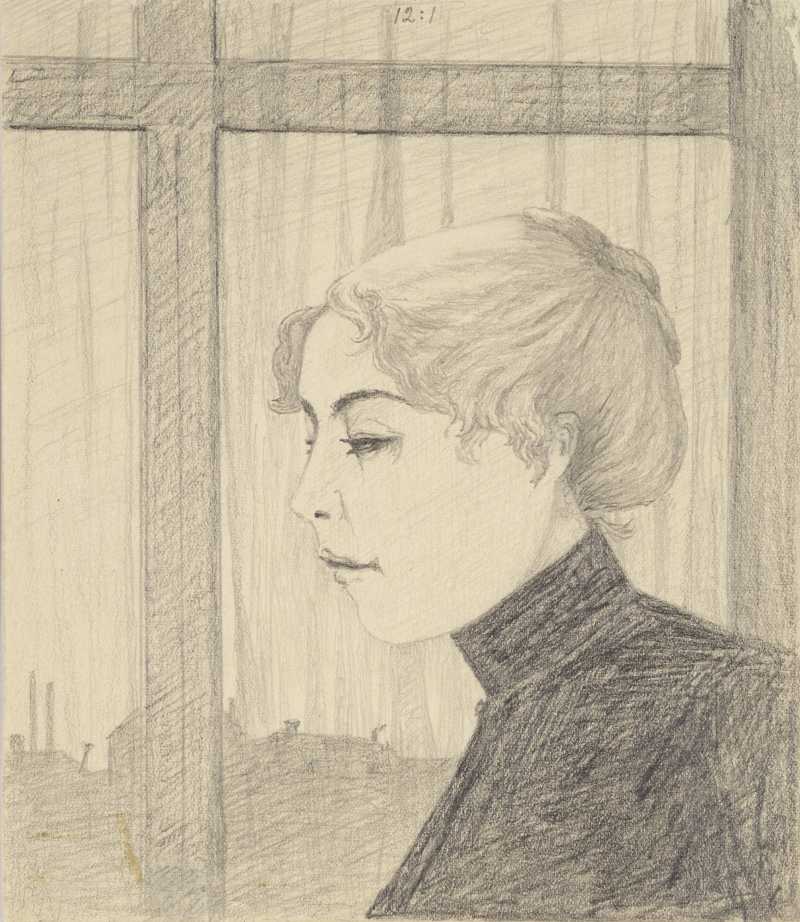
Hjalmar Söderberg, Maria von Platen from memory, undated, drawing. Göteborgs universitetsbibliotek. Photo: Per Myrehed

Anna Riwkin, The author Hjalmar Söderberg, ca 1936, silver gelatin photography. Moderna Museet. Photo: Anna Riwkin
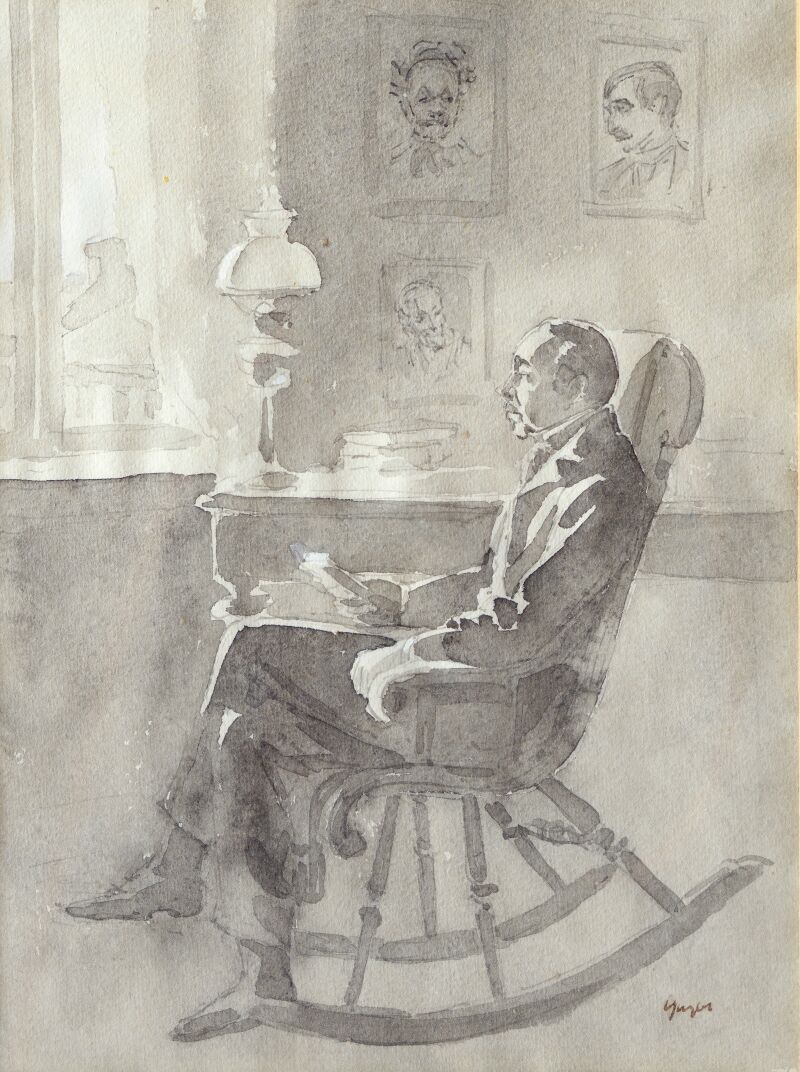
Yngve Berg, Portrait of Hjalmar Söderberg, 1947, ink wash, Bonniers portrait collection. Photo: Per Myrehed




